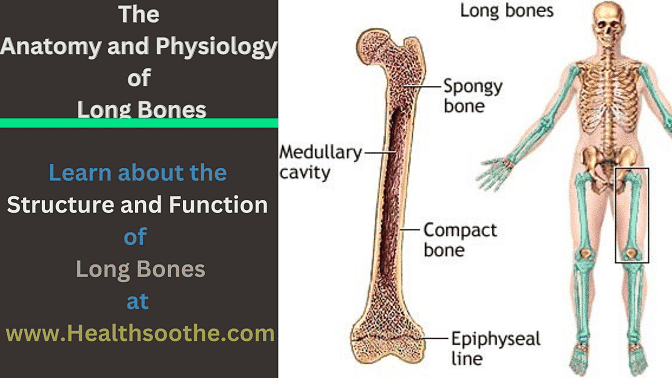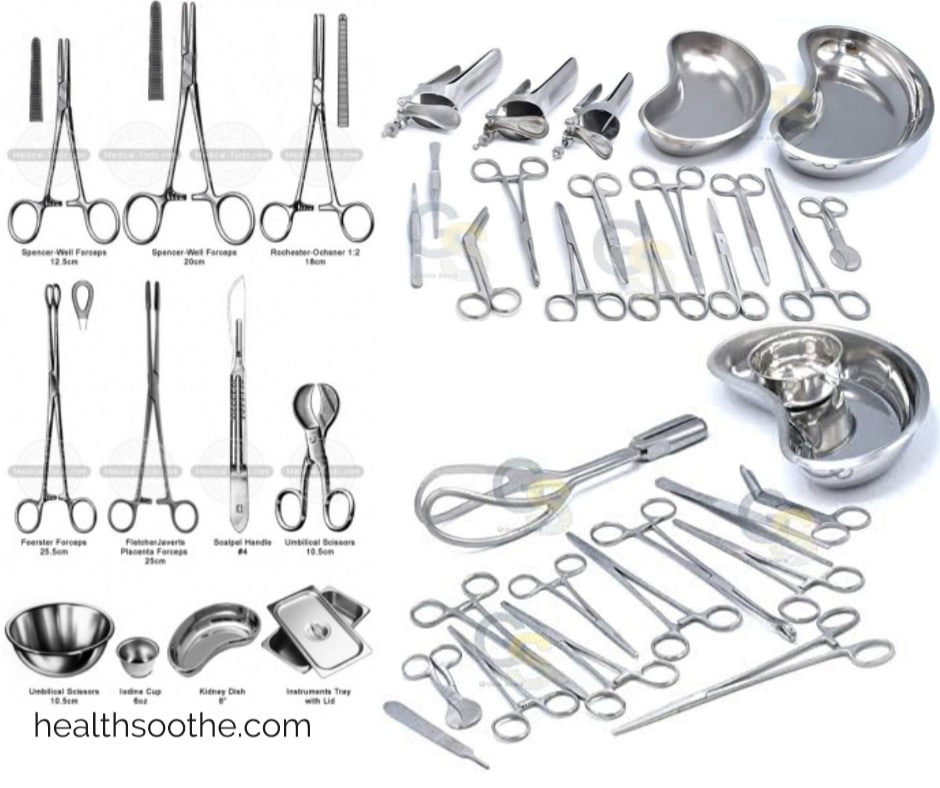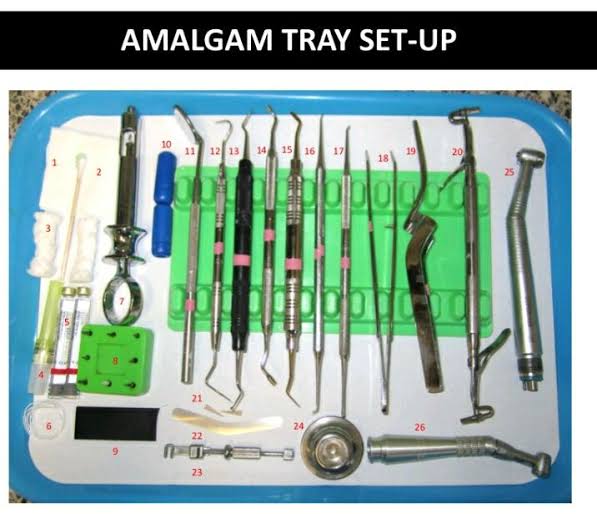Introduction and Overview of Long Bones
[ninja_tables id=”73101″]
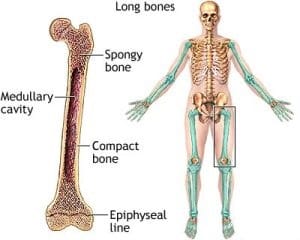
Long bones are hard, dense bones that provide strength, structure, and mobility. The thigh bone (femur) is a long bone. A long bone has a shaft and two ends.
Some bones in the fingers are classified as long bones, even though they are short in length. This is due to the shape of the bones, not their size. Long bones contain yellow bone marrow and red bone marrow, which produce blood cells.
The long bones are those that are longer than they are wide. They are one of five types of bones: long, short, flat, irregular, and sesamoid.
A long bone is a bone that has a shaft and 2 ends and is longer than it is wide. Long bones have a thick outside layer of compact bone and an inner medullary cavity containing bone marrow.
The ends of a long bone contain spongy bone and an epiphyseal line. The epiphyseal line is a remnant of an area that contained hyaline cartilage that grew during childhood to lengthen the bone. All of the bones in the arms and legs, except the patella, and bones of the wrist, and ankle, are long bones.
You can watch the video below to know more on the anatomy of long bones:
The Structure of Long Bones – Features of Long Bones
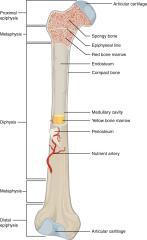
The outer shell of the long bone is made of cortical bone also known as compact bone[mfn]Nelms, Marcia; Sucher, Kathryn P. (2019). Nutrition Therapy and Pathophysiology. Cengage Learning. p. 731. ISBN 9780357390597.[/mfn]. This is covered by a membrane of connective tissue called the periosteum. Beneath the cortical bone layer is a layer of spongy cancellous bone.
Inside this is the medullary cavity which has an inner core of bone marrow, it contains nutrients and helps in the formation of cells, made up of yellow marrow in the adult and red marrow in the child.
A typical long bone consists of the following parts:
- The diaphysis (growing between) is the shaft of a long bone — the long, cylindrical, main portion of the bone.
- The epiphyses (growing over; the singular is epiphysis) are the proximal and distal ends of the bone.
- The metaphyses (between; the singular is metaphysis) are the regions between the diaphysis and the epiphyses. In a growing bone, each metaphysis contains an epiphyseal (growth) plate, a layer of hyaline cartilage that allows the diaphysis of the bone to grow in length.
When a bone ceases to grow in length at about ages 14–24, the cartilage in the epiphyseal plate is replaced by bone; the resulting bony structure is known as the epiphyseal line.
- The articular cartilage is a thin layer of hyaline cartilage covering the part of the epiphysis where the bone forms an articulation (joint) with another bone. Articular cartilage reduces friction and absorbs shock at freely movable joints. Because articular cartilage lacks a perichondrium and lacks blood vessels, repair of damage is limited.
- The periosteum is a tough connective tissue sheath and its associated blood supply that surrounds the bone surface wherever it is not covered by articular cartilage. It is composed of an outer fibrous layer of dense irregular connective tissue and an inner osteogenic layer that consists of cells.
Some of the cells enable bone to grow in thickness, but not in length. The periosteum also protects the bone, assists in fracture repair, helps nourish bone tissue and serves as an attachment point for ligaments and tendons.
The periosteum is attached to the underlying bone by perforating fibers or Sharpey’s fibers, thick bundles of collagen that extend from the periosteum into the bone extracellular matrix.
- The medullary cavity (medulla- = marrow), or marrow cavity, is a hollow, cylindrical space within the diaphysis that contains fatty yellow bone marrow and numerous blood vessels in adults. This cavity minimizes the weight of the bone by reducing the dense bony material where it is least needed. The long bones’ tubular design provides maximum strength with minimum weight.
- The endosteum (endo- = within) is a thin membrane that lines the medullary cavity. It contains a single layer of bone-forming cells and a small amount of connective tissue.
To know more about the structure of long bones, watch the video below:
The Function of Long Bones
Long bones are hard, dense bones that provide strength, structure, and mobility. Long bones, especially the femur and tibia, are subjected to most of the load during daily activities and they are crucial for skeletal mobility.
The following are further functions of long bones:
- Supports soft tissue and provides attachment for skeletal muscles.
- Protects internal organs.
- Assists in movement, along with skeletal muscles.
- Stores and releases minerals.
- Contains red bone marrow, which produces blood cells.
- Contains yellow bone marrow, which stores triglycerides (fats).
Watch the video below to know more on the function of long bones:
The Embryology and Formation of Long Bones
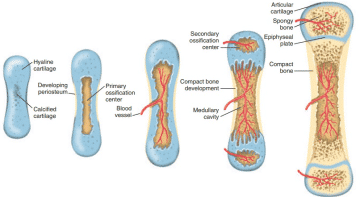
They grow primarily by elongation of the diaphysis, with an epiphysis at each end of the growing bone. The ends of epiphyses are covered with hyaline cartilage (“articular cartilage”).
The longitudinal growth of long bones is a result of endochondral ossification[mfn]https://en.wikipedia.org/wiki/Endochondral_ossification[/mfn] at the epiphyseal plate. Bone growth in length is stimulated by the production of growth hormone (GH), a secretion of the anterior lobe of the pituitary gland.
The long bone category includes the femora, tibiae, and fibulae of the legs; the humeri, radii, and ulnae of the arms; metacarpals and metatarsals of the hands and feet, the phalanges of the fingers and toes, and the clavicles or collar bones.
The long bones of the human leg comprise nearly half of the adult height. The other primary skeletal components of height are the vertebrae and skull. The outside of the bone consists of a layer of connective tissue called the periosteum.
Additionally, the outer shell of the long bone is compact bone, then a deeper layer of cancellous bone (spongy bone) which contains in the medullary cavity the bone marrow.
Wanna know more about how long bones are formed? Then, watch the video below:
The Clinical Significance of Long Bones
There are two congenital disorders of the long bones. In a disorder known as rachitis fetalis anularis the ends of the long bones (epiphyses) are enlarged.
Another disorder, rachitis fetalis micromelica, is a deficiency in the growth (as shortness) of the bones[mfn]al.], consultants Daniel Albert … [et (2012). Dorland’s illustrated medical dictionary (32nd ed.). Philadelphia, PA: Saunders/Elsevier. p. 1570. ISBN 978-1-4160-6257-8.[/mfn]. There is a surgical procedure called distraction osteogenesis[mfn]Mucci, Grace A.; Torno, Lilibeth R. (2015). Handbook of Long Term Care of The Childhood Cancer Survivor. Springer. p. 163. ISBN 9781489975843.[/mfn] which is used to lengthen long bones.
Long Bones Fracture
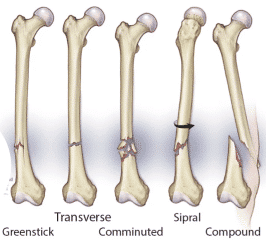
Long bones may suffer from different types of fractures. Doctors describe fractures to other doctors using classification systems. The location of the fracture (the tibial shaft is divided into thirds: distal, middle, and proximal)
The pattern of the fracture (for example, the bone can break in different directions, such as crosswise, lengthwise, or in the middle). Whether the skin and muscle over the bone are torn by the injury (open fracture).
The following are the types of long bones fractures:
- Simple fracture – a fracture that does not break the skin.
- Greenstick fracture – a fracture in which one side of the bone is broken while the other is bent.
- A spiral fracture occurs when the bone is twisted apart.
- A comminuted fracture occurs when the bone is splintered or crushed.
- A transverse fracture is characterized by a horizontal maxillary fracture.
Greenstick Fracture
A greenstick fracture occurs when a bone bends and cracks, instead of breaking completely into separate pieces. Greenstick fracture looks similar to what happens when you try to break a small, “green” branch on a tree.
Most greenstick fractures occur in children younger than 10 years of age. This type of broken bone most commonly occurs in children because their bones are softer and more flexible than the bones of adults.
Even mild greenstick fractures are usually immobilized in a cast. In addition to holding the cracked pieces of the bone together so they can heal, a cast can help prevent the bone from breaking all the way through if the child falls on it again.
Greenstick fracture causes
Childhood fractures most commonly occur with a fall. Arm fractures are more common than leg fractures since the common reaction is to throw out your arms to catch yourself when you fall.
Risk factors for greenstick fracture
The risk of greenstick fractures is higher in young children because their bones are softer and more flexible than adult bones. In a greenstick fracture, the bone bends and cracks instead of breaking into separate pieces. Most greenstick fractures occur in children under age 10.
Greenstick fracture symptoms
Signs and symptoms will vary, depending on the severity of the greenstick fracture. Mild fractures might be mistaken for sprains or bruises. More-severe greenstick fractures may cause an obvious deformity, accompanied by significant pain and swelling.
Contact your doctor if your child has persistent pain in an injured limb. Seek immediate medical attention if a child is unable to bear weight or if there is obvious pain, deformity, and swelling.
Greenstick fracture diagnosis
During the physical exam, your doctor will inspect the affected area for tenderness, swelling, deformity, numbness, or an open wound. Your child may be asked to move his or her fingers into certain patterns or motions to check for nerve damage.
Your doctor may also examine the joints above and below the fracture. X-rays can reveal most greenstick fractures. Your doctor may want to take X-rays of the uninjured limb, for comparison purposes.
Greenstick fracture treatment
Depending on the severity of the greenstick fracture, the doctor may need to straighten the bone manually so it will heal properly. Your child will receive pain medication and possibly sedation drugs for this procedure.
Greenstick fractures have a high risk of breaking completely through the bone, so most of these types of fractures are immobilized in a cast during healing.
On occasion, your doctor may decide that a removable splint could work just as well, particularly if the break is mostly healed. The benefit of a splint is that your child might be able to take it off briefly for a bath or shower.
X-rays are required in a few weeks to make sure the fracture is healing properly, to check the alignment of the bone, and to determine when a cast is no longer needed. Most greenstick fractures require four to eight weeks for complete healing, depending on the break and the child’s age.
Spiral Fracture
A spiral fracture is caused by a twisting force. The fracture line encircles the shaft like the stripes on a candy cane.
Comminuted Fracture
Comminuted fracture is where the bone breaks into three or more pieces.
Open Fracture or Compound Fracture
If a bone breaks in such a way that bone fragments stick out through the skin or a wound penetrates down to the broken bone, the fracture is called an open or compound fracture. Open fractures often involve much more damage to the surrounding muscles, tendons, and ligaments.
They have a higher risk for complications—especially infections—and take a longer time to heal.
Transverse Fracture
In this transverse fracture, the break is a straight horizontal line going across the tibial shaft.
Oblique Fracture
Oblique fracture has an angled line across the shaft.
To know more on long bones fractures, watch the video below:
All right, guys, that is it for now for long bones. I hope Healthsoothe answered any questions you had concerning long bones.
Feel free to contact us at contact@healthsoothe.com if you have further questions to ask or if there’s anything you want to contribute or correct to this article. And don’t worry, Healthsoothe doesn’t bite.
You can always check our FAQs section below to know more about long bones.
And always remember that Healthsoothe is one of the best health sites out there that genuinely cares for you.
[bwla_faq faq_topics=”frequently-asked-questions-about-long-bones” sbox=”1″ paginate=”1″ pag_limit=”5″ list=”1″ /]

